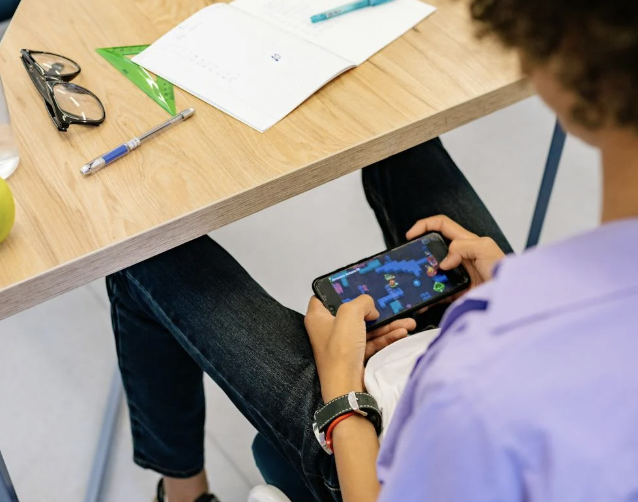
Governor Kathy Hochul announced in early May that New York will become the largest school system to ban cell phones in classrooms. Photo by Yan Krukau via Pexels.
On May 6th, New York Governor Kathy Hochul announced a statewide restriction of smartphones in schools for students in grades K-12. The new restriction will be set in place for the upcoming 2025-2026 school year. This landmark policy impacts all schools in public school districts, charter schools, and Boards of Cooperative Educational Services.
This change is part of Governor Hochul’s dedication to the protection of youth mental health. The policy includes:
Allowing schools to develop their respective plans for storing smartphones during the school day
No unauthorized use of phones or other internet-enabled devices while on school grounds
Requiring schools to provide a way for parents to contact their children whenever necessary
Students will have access to simpler phones that don’t have internet access. They will also be permitted to use internet-enabled devices provided by the school, such as laptops and tablets. In addition, students with medical conditions who need access to internet-enabled devices will be exempt from Governor Hochul’s policy.
However, the policy will be the first of its kind to combat the overuse of smartphones in the classroom and throughout the school day.
Ms. Mancebo, dean and science teacher, said, “I think a ban would exponentially, greatly benefit student learning… they will not be as distracted. It’ll also prepare them for the workforce.”
“Students being on their phones is not just affecting them in school, it continues to affect them in college,” she added.
Ms. Mancebo also expressed the impacts of students constantly having their phones: “Just being a dean, I noticed there’s a lot of cyberbullying. A lot of the fights that we’ve seen first culminate in exchanges through social media.”
Cardozo junior Fatima Mukhtar shared how peers reacted when informed of the new policy. “Some students, like the seniors, have said it’s a good thing, but also that they’re glad they won’t be here when it happens,” she said. “Most students don’t like the idea, even knowing that it has the potential to better the learning experience for students.”
Similar sentiments were expressed by senior Yeyeong Chang, who commented, “Banning will definitely improve students’ concentration by preventing them from getting distracted by their phones. Many students go on their phones at any chance they see, and that is often a problem.”
Social media is not the only reason that students overuse their phones in the classroom. With AI becoming a huge tool for students to plagiarize and cheat, it becomes difficult for teachers to always get authentic work.
English teacher Ms. Bifano pointed out, “Not only are they distracted watching TikTok videos, but I do catch some of them using ChatGPT.”
However, some students expressed that they use their phones during class for educational purposes as well, such as Google Classroom and Kahoot. Yet, many teachers still expressed the negative experiences they have had with students who engage with their devices instead of class.
With the new policy, each school will have to figure out a plan that works best for them and their student body. While some schools use pouches, others are looking into different storage options. Collecting phones, however, will take a substantial amount of time to do.
“Our school is large. We have 3,000 students, so collecting cell phones for 3,000 students is going to be really hard,” Assistant Principal Ms. Rothenberg said. “And then, also, we don’t have enough devices to access technology. So, sometimes we do rely on students having their cell phones, so I really don’t know how it’s going to work yet.”
Many administrators echoed this sentiment, saying that they are unsure what next school year will look like and how they will implement the policy as of yet.
However, one thing that the students have expressed a dislike for is the fact that they weren’t informed of the new policy for next year at all yet by the administration. Many students who did know about it shared they had heard about it on social media or had seen it in the news.
In addition, the majority of students at Cardozo believe the ban would be detrimental. Of 31 students polled, 16% agreed that the ban would be good, while a whopping 84% were leaning toward the phone ban being a negative.
In many other states outside of New York, Yondr pouches and other similar devices have been successful throughout the school day. However, there has been no final say on the system of a phone ban that will take place in New York public schools as of yet.
It is unknown if this ban will ever be overturned, but starting next year, students must learn to live without their phones in school.